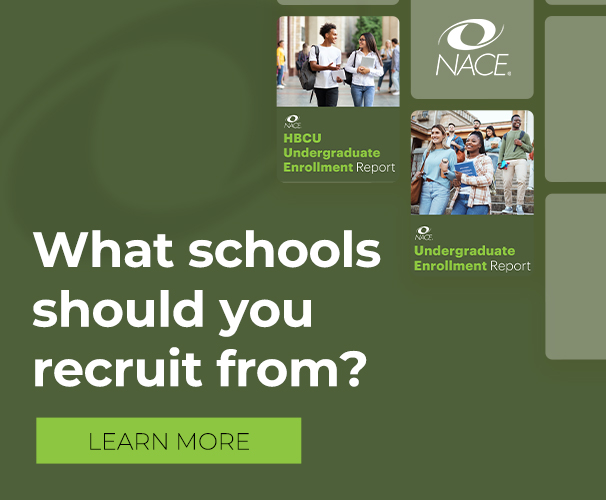NACE Journal, February 2020
The idea of what constitutes professionalism in the workplace is steadily evolving. In the past, employees avoided disclosing their non-working identities in the workplace; currently, many companies are embracing the diverse identities their employees hold. Not only are employees becoming more comfortable disclosing aspects of their identity—such as being a parent, an individual with a disability, or an individual in a sexual or gender identity minority group in the workplace, for example—but also some candidates are disclosing their diverse backgrounds during job interviews.
In the workplace, authentic communication is becoming more valued. Due to the changing demographics of the nation and an increasingly globalized world, businesses are recognizing the benefits of embracing a diverse work force. Through hiring, training, and retaining employees from diverse backgrounds, businesses are better able to identify creative, innovative solutions to meet the needs of a rapidly connected diverse world.
With this evolution of professionalism in the work force, recruiters and job candidates can benefit from recognizing diversity recruiting practices and inclusion initiatives. Moreover, with this information, career services professionals can further aid employers in recruiting diverse talented candidates as well as advocate for students from all backgrounds and ability levels to join in workplaces that support their professional development and wellbeing. As career services professionals, we encourage students to ask informed questions regarding employment to assess environmental fit. Policies, resources, and programming all have an impact on a workplace’s culture. This article focuses on companies’ diversity practices and inclusion initiatives in the workplace.
Our goal was to find out what strategies employers are using to recruit and retain individuals from diverse backgrounds. Specifically, we were concerned with individuals who identify in the lesbian, gay, bisexual, transgender, and queer (LGBTQ+) community; international students; veterans; individuals with disabilities; and individuals from diverse ethnic and minority backgrounds.
Exploring Employer Diversity and Inclusion Initiatives
We invited employers that recruit at Big XII universities to participate in a survey regarding diversity in the workplace. To reach intended participants, we contacted Big XII career center staff with employer-focused roles to email our survey to their list of company recruiters. The survey addressed recruiters’ workplace policies, strategies, resources, and inclusion initiatives. We received 78 responses. (See Figures 1 through 3 for information about organization size and respondent demographics.)
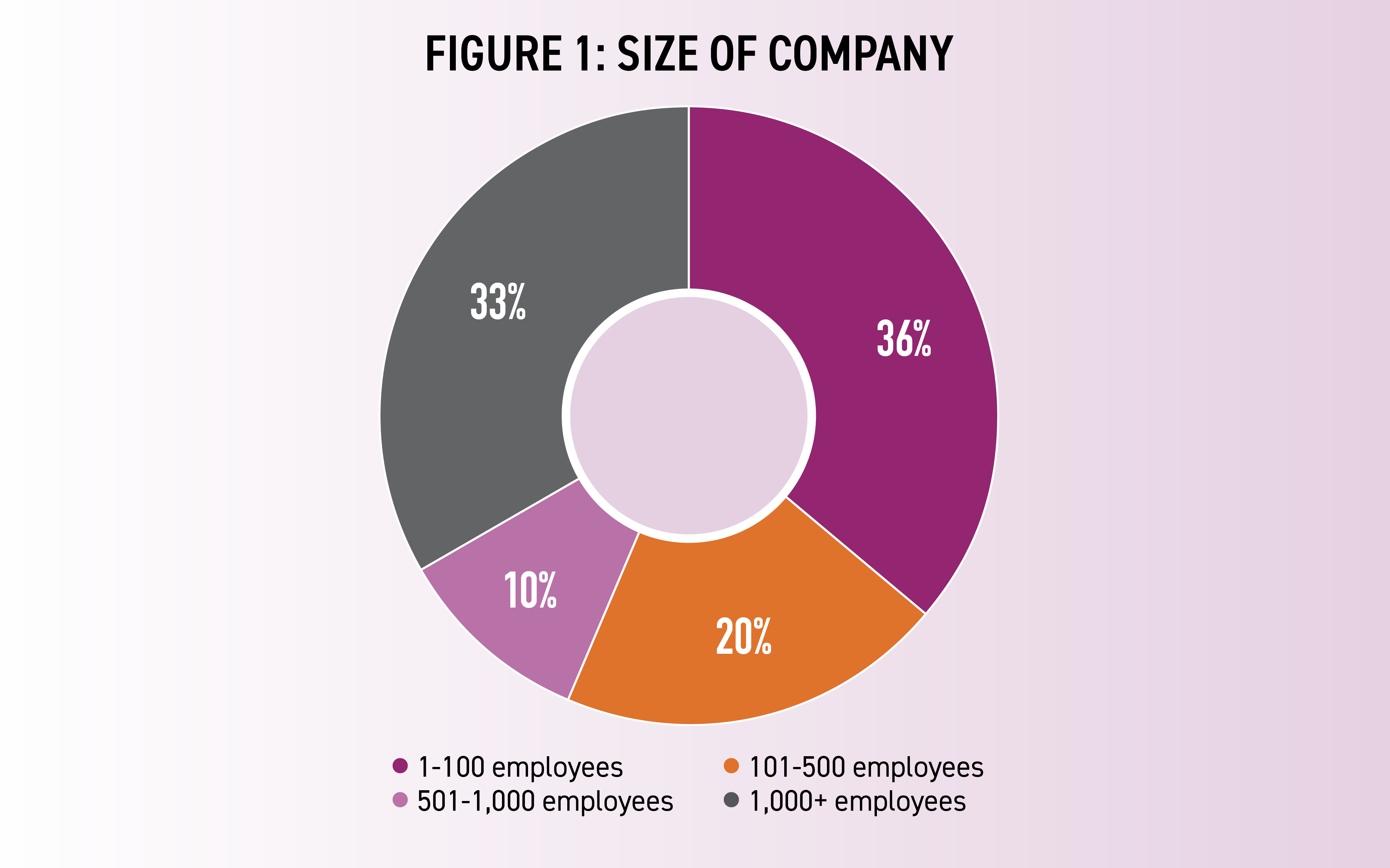
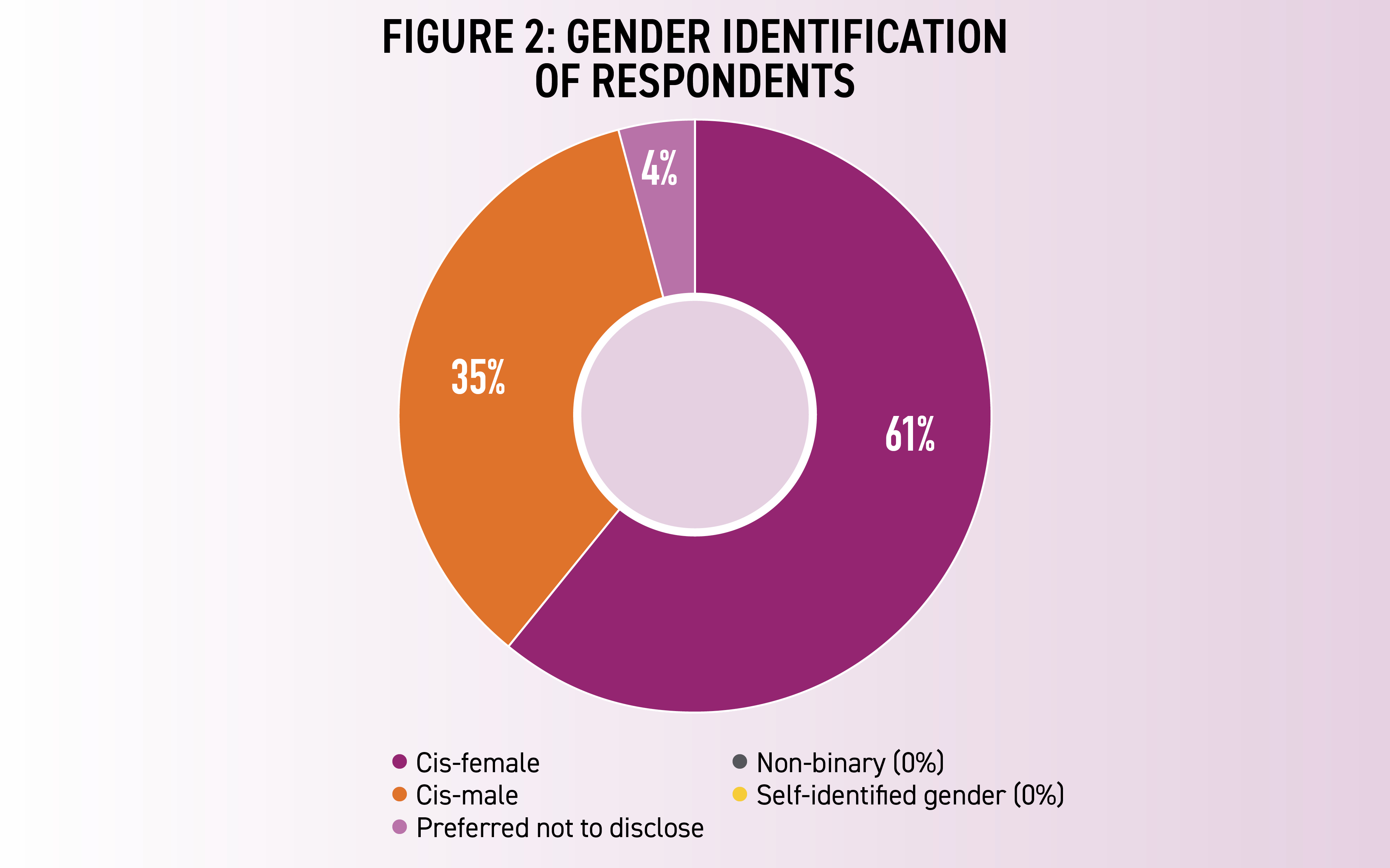
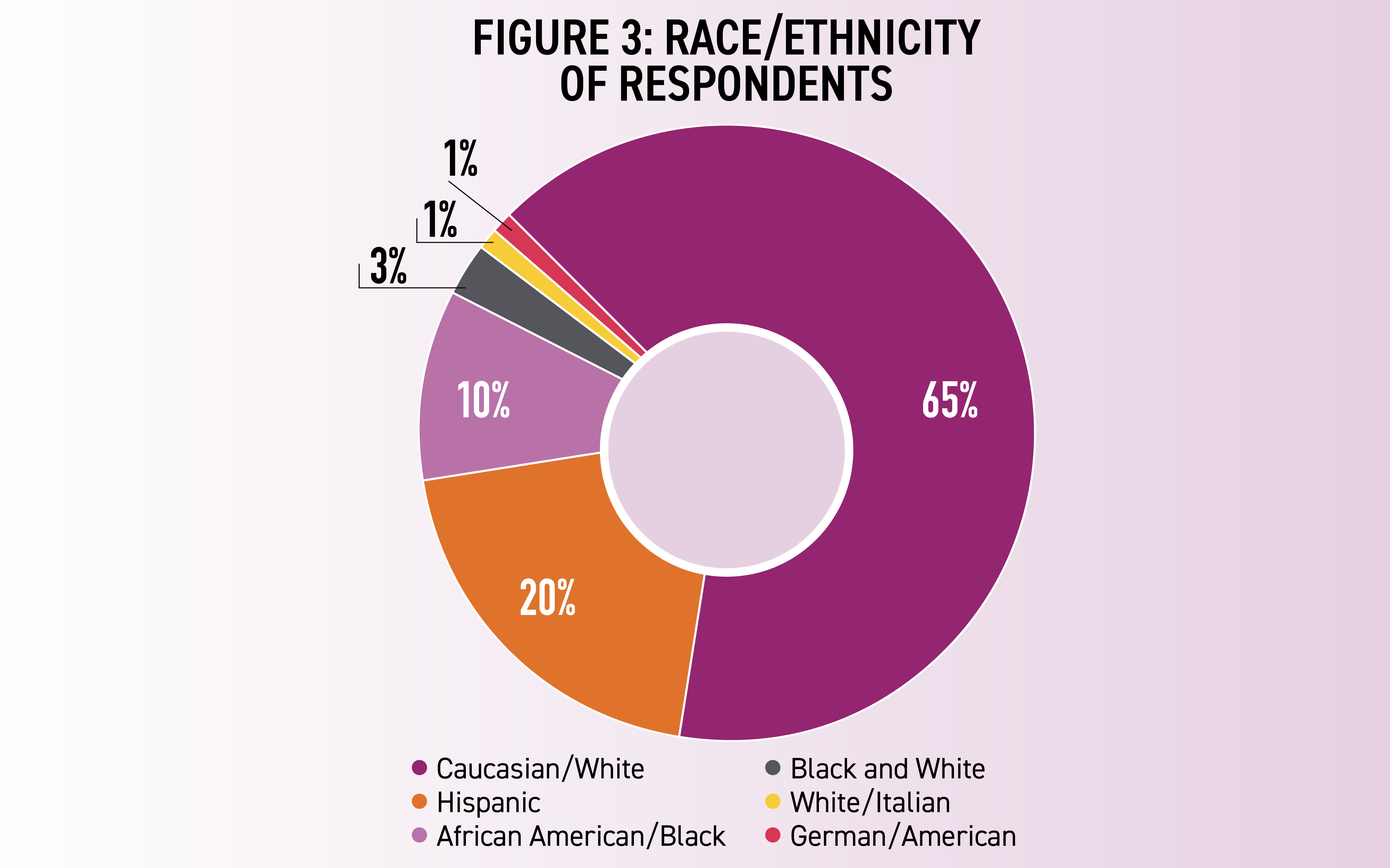
Guiding Principles
The majority of companies surveyed were involved in numerous diversity initiatives and inclusive practices through their recruiting materials, strategic business plan, and consideration of employee minority representation. Some companies even included diversity in their mission statement. (See Figure 4.)
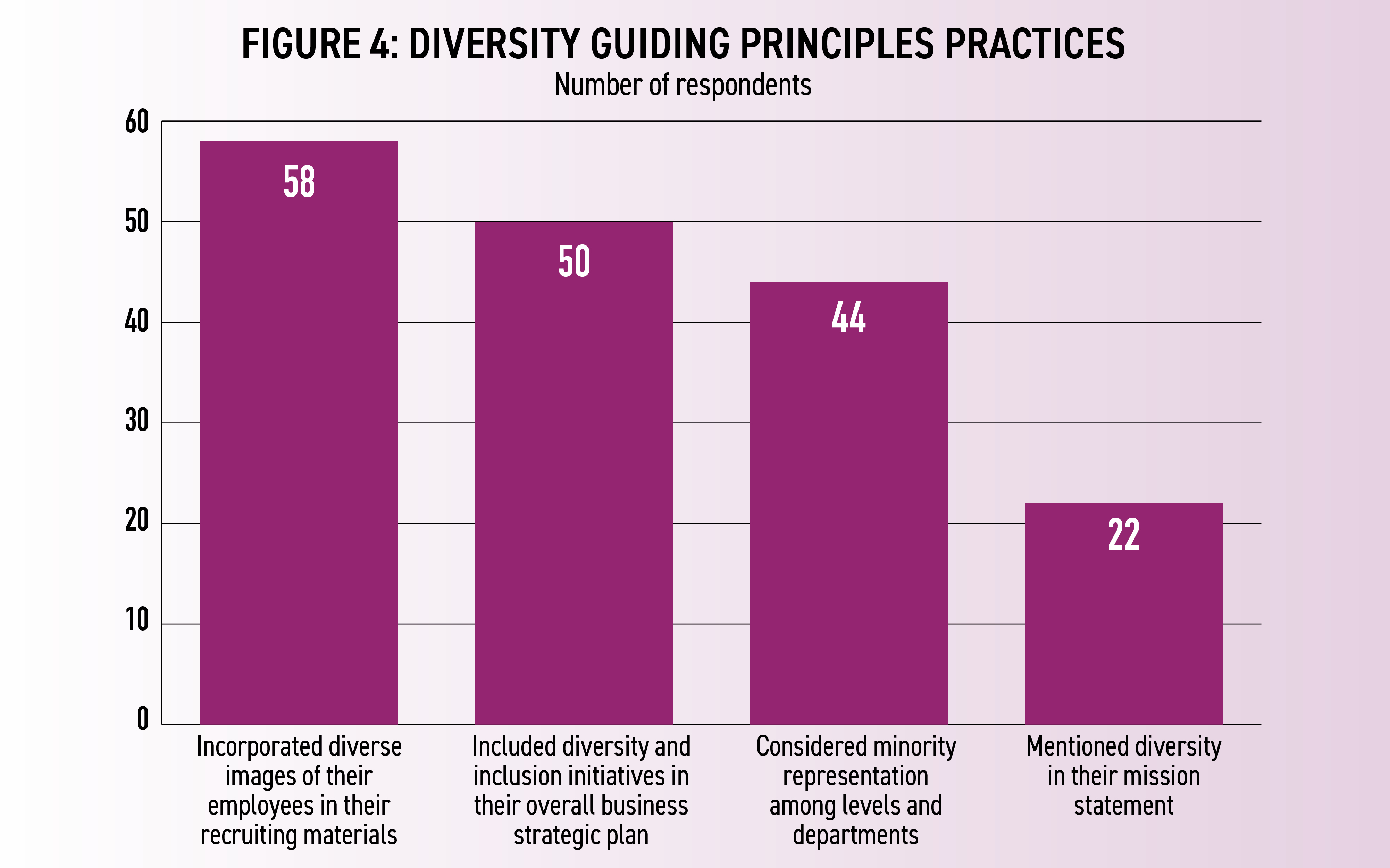
As Figure 4 shows, while most responding companies (74 percent) purposely included images depicting diverse identities of their employees in their recruitment materials, only 28 percent have incorporated diversity into their mission statement. We attributed this difference to the fact that mission statements may guide the branding of the company as well as the product produced rather than guiding the direction of the company’s hiring strategies or workplace culture. However, organizations may wish to look more closely at their organization to ensure that their company not only represents diversity while recruiting but also considers other aspects of diversity and inclusion practices within their company. Further, career services professionals might recommend that their students review companies beyond the promoted recruiting materials and consider other demonstrations of inclusive practices. For example, students could search for transparent information regarding minority representation among levels and departments; this might include the percentage of minority employees within the company as well as within specific departments and management. This information would allow job candidates to be aware of the number of employees from minority backgrounds in leadership positions.
In addition, many respondents reported that their company offers diversity training opportunities to their employees. (See Figure 5.)
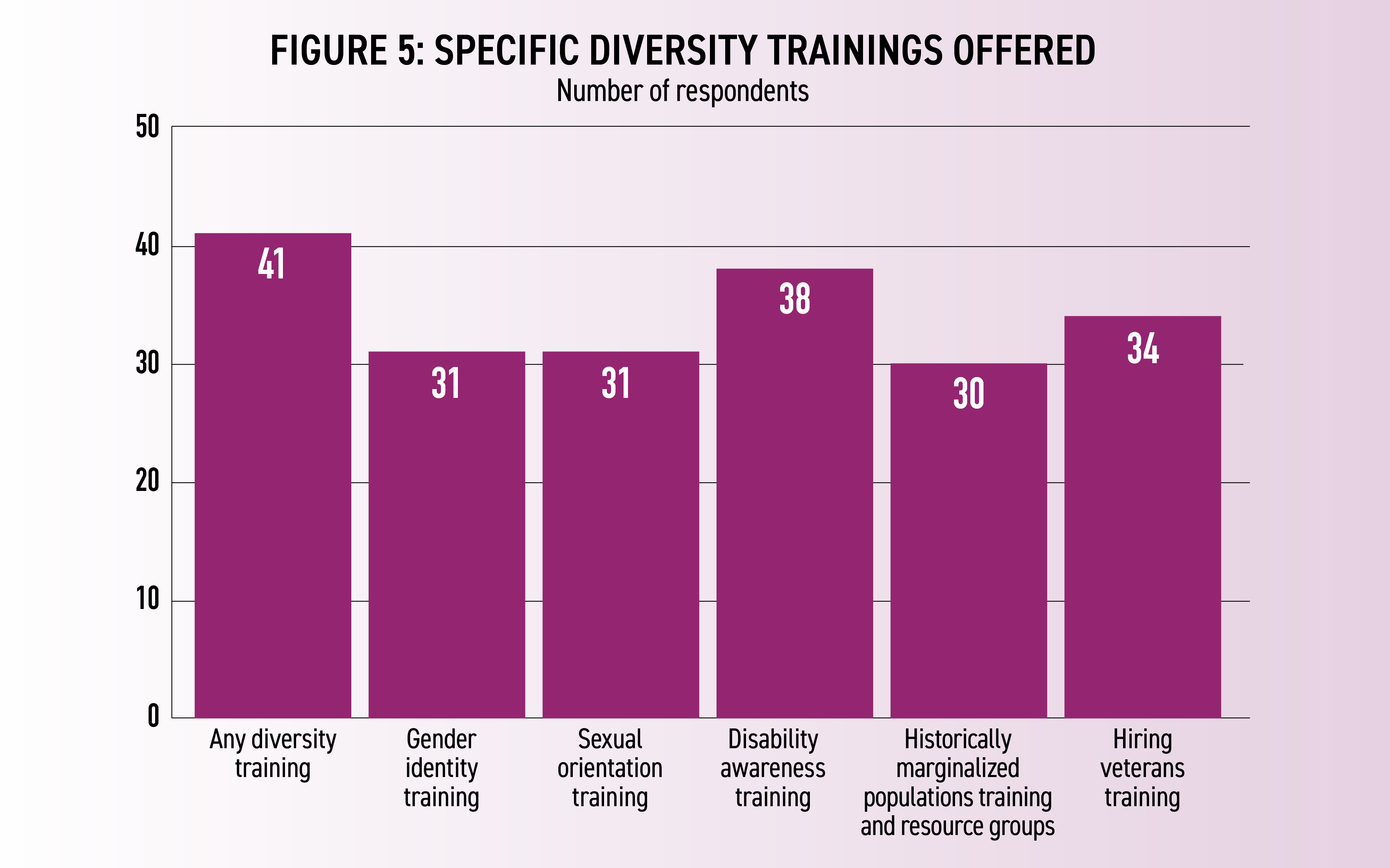
As Figure 5 depicts, only a slight majority (52 percent) of employers taking part in our study offered diversity training. Of diversity training opportunities offered, disability awareness was the most frequent diversity training opportunity available. If employers wish to continue to improve their company’s diversity practices and they are not currently requiring diversity training prior to recruiting, employers may consider requiring such training for their recruiters. Career services professionals may want to suggest that students ask employers about the diversity training opportunities within their organization.
Influence of Size
The size of the company played a large role in the number of resources available. (See Figure 6.)
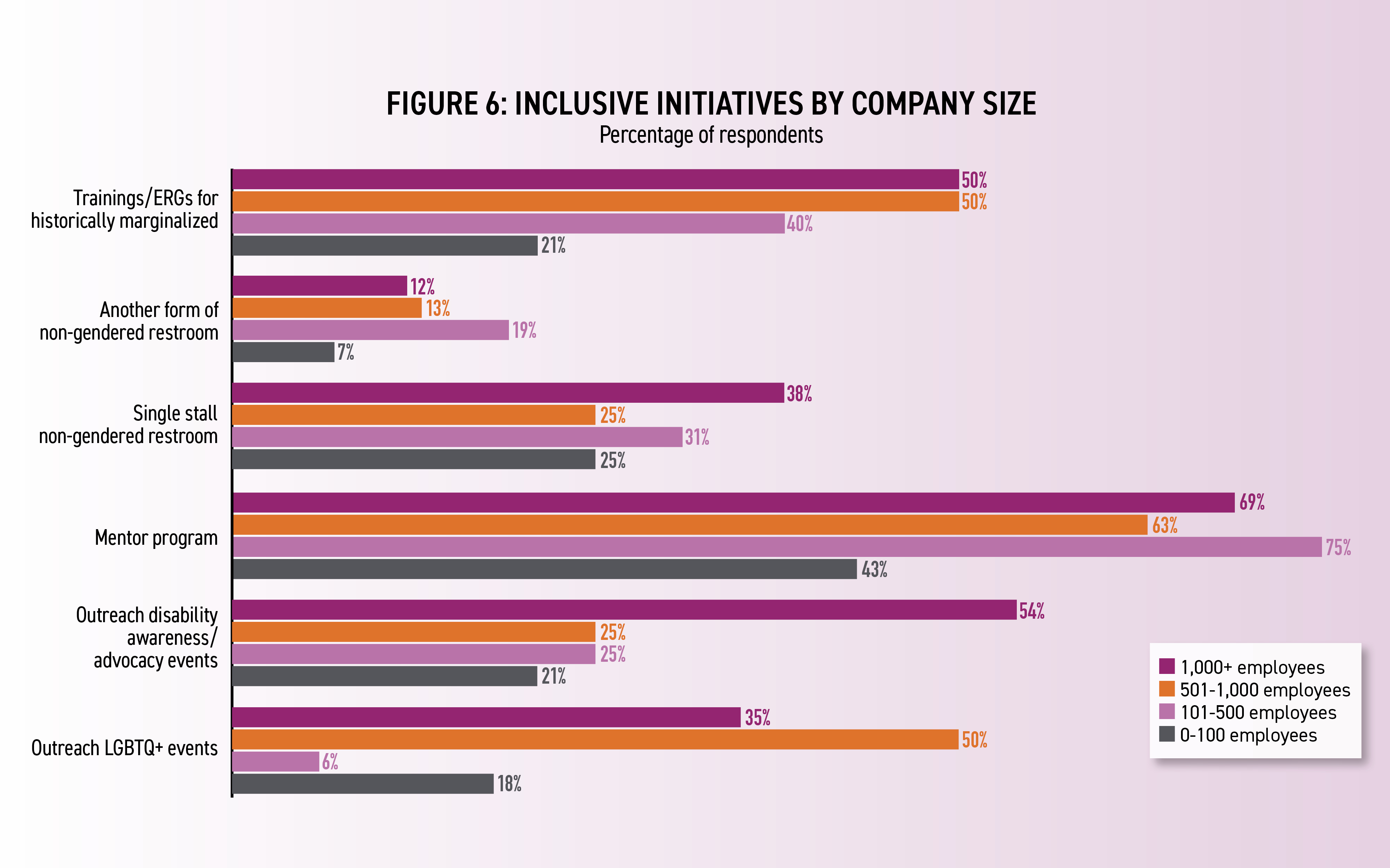
Not surprising, companies with more than 500 employees tended to offer additional resources than their smaller counterparts. These resources included participation in advocacy events for LGBTQ+, participation in disability awareness events, and trainings for historically marginalized populations.
A key point of interest in many recent discussions concerning the LGBTQ+ community in the workplace is the availability of non-gendered restroom facilities, which are defined as multiple-stalled restrooms available for all individuals regardless of gender. While 38 percent of employers with 1,000+ employees reported having single stall non-gendered restrooms, only 25 percent of companies with fewer than 100 employees reported the same. Overall, only 34.1 percent of companies surveyed offered some form of a non-gendered restroom option for their employees. A recommendation for companies that are seeking to increase their organization’s gender inclusivity resources is to offer a non-gendered restroom. Career services professionals may wish to inform students who would prefer a non-gendered restroom to include this in their research. Additionally, it could be beneficial to look at initiatives in which companies have participated to support gender non-binary employees.
Qualitatively, some recruiters disclosed they were at a small organization with only a few employees and felt that some of the questions were not applicable for their organization. However, these respondents stated that they completed this survey to support research regarding diversity recruiting practices.
Non-Discrimination Policies
The survey questioned respondents regarding their organization’s non-discrimination policies. (See Figure 7.)
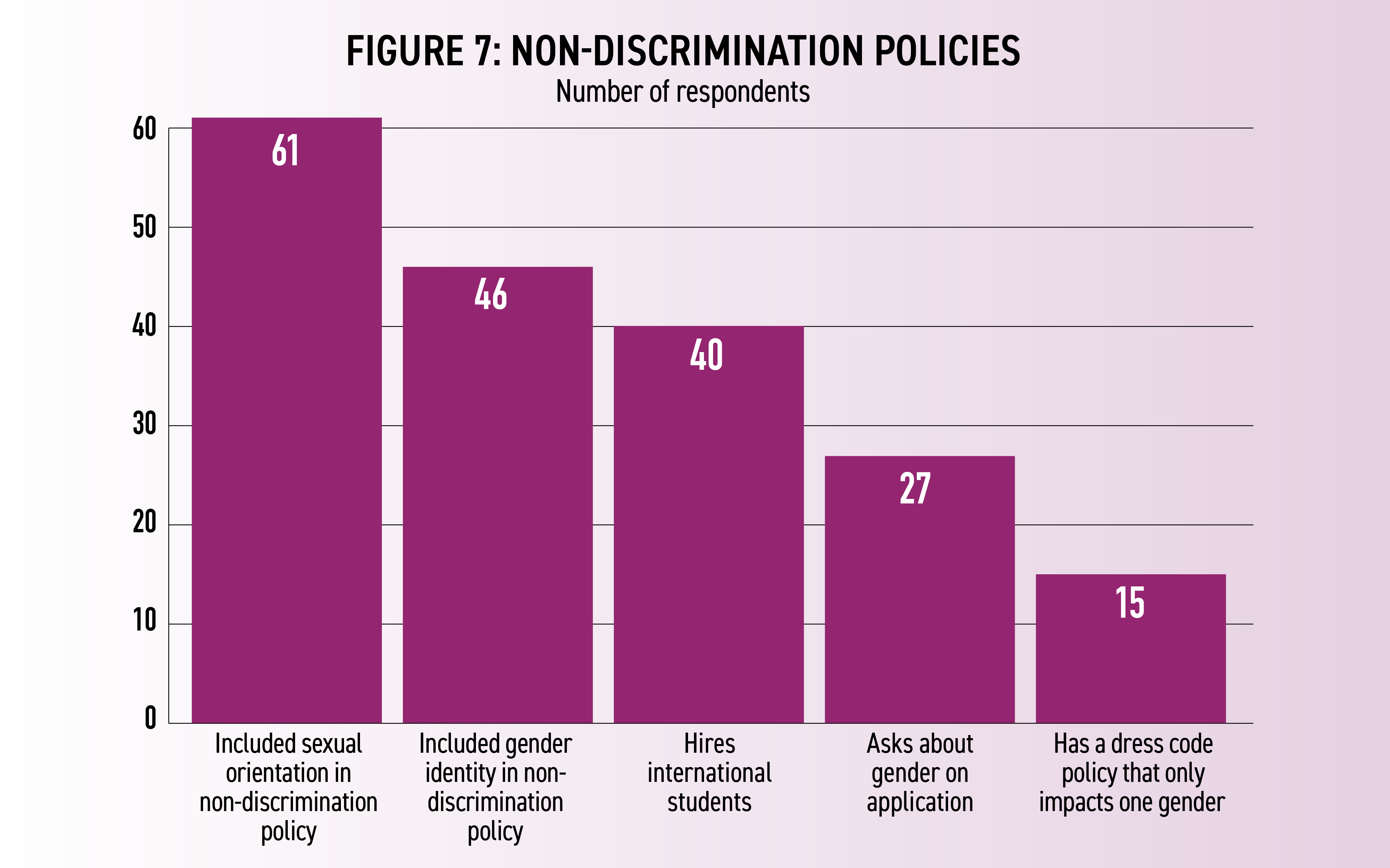
As Figure 7 shows, the majority of respondents included sexual orientation (77 percent) and gender identity (58 percent) in the non-discrimination policies, but more than one-third of employers still ask about gender on applications. Regarding dress code, 19 percent of respondents stated that their organization has a dress code policy that impacts only one gender.
Companies aspiring to increase their diversity recruiting practices could consider adding sexual orientation and gender identity on non-discrimination policies, avoiding questions regarding gender on applications, and not including gender-specific criteria and terminology in their dress codes. Career services professionals wishing to leverage this information with their students may recommend students review the application and dress codes for inclusive practices, such as the absence of gender specifications and the inclusion of sexual orientation and gender identity in company non-discrimination policies.
Finally, related to non-discrimination policies, a slight majority (52 percent) of respondents answered that their organization has sponsored at least one international employee. Of the companies that sponsored international employees, 62.5 percent were smaller than 1,000 employees. Smaller companies that have not yet hired an international student may wish to consider this option, because their peers have successfully navigated the federal hiring laws. Further, career services professionals may want to share this data with international students to broaden their employer search and increase their opportunities for employment.
Practical Implications and Recommendations
Based on survey results, our study suggests that companies are increasingly recognizing diversity issues. Many are participating in events specifically targeting diversity recruiting, while others have a representative focused on diversity recruiting. Not only are employers seeking opportunities to recruit diverse employees, but also organizations are offering resources to promote more inclusive company environments. Career services professionals can identify and develop relationships with employers that integrate diversity practices and offer these employers the opportunity to promote their diversity initiatives. Furthermore, a large percentage of companies surveyed have employees who attended training related to veterans’ issues, disability awareness, sexual orientation, gender identity, and historically marginalized populations. It may be advantageous for companies to highlight these training opportunities in their company literature and campus presence through job fairs, information sessions, and one-on-one meetings with career services professionals.
Among respondents to our survey, companies with 500+ employees were more likely to offer additional inclusive resources and benefits to employees. Because companies have limited resources, some of the offerings cited here may not be possible for all employers. However, there were several that would involve minor, inexpensive changes, such as adding gender identity and sexual orientation to non-discrimination policies or selecting individuals from diverse backgrounds to recruit candidates for employment. Career services professionals may recommend to their recruiter partners that they add such non-discrimination policies to job postings shared within their institution.
Career services professionals may also consider exploring students’ values regarding diversity in the workplace. This exploration could be achieved through a variety of activities, such as including specific questions regarding diversity and inclusion in student career exploration, job-search, and mock interview appointments. For example, career services professionals may consider asking students some of the following questions in their one-on-one appointments:
- When searching for a potential employer, what are the key attributes you seek?
- Have you identified values you want in a potential employer? If so, what are those values?
- What type of company culture do you value?
- What type of culture would make you feel valued and included?
- What type of colleague do you see yourself working well with? What type of colleague do you see yourself not working well with? When researching a company, how can you identify these characteristics?
Career services professionals may also suggest questions for students to consider while researching a potential employer. These questions could include:
- Are this company’s values evident in its literature? If so, are they congruent with my own values?
- Does this company offer training opportunities for employees regarding diversity and inclusion?
- Does this company include diversity and inclusion in its workplace policies or strategies?
- Does this company offer resources and initiatives regarding diversity and inclusion?
New Strategies for the Changing Workplace
Expanding views of professionalism are changing work environments, making it more acceptable for employees to bring their authentic selves to the workplace. Through identifying companies’ diversity recruiting, hiring, training, and retention practices involving policies, resources, and training initiatives, career services professionals can provide insight to recruiters and job candidates. The continuously growing diversity of the nation with increased communication throughout the world requires new recruiting strategies to enhance productivity, economic growth, and personal/professional wellbeing in the workplace.





